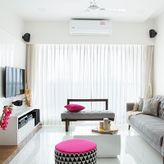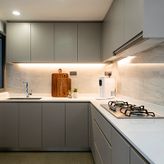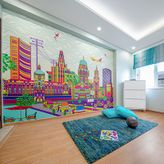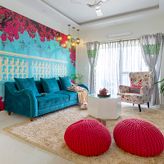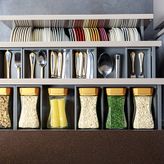In This Article
Ever wondered how your living space could be kinder to the planet? That’s where sustainable interior design comes in. It’s all about creating gorgeous homes that tread lightly on the earth—using materials and methods that won’t drain our resources or harm the environment. Think of it as designing with a conscience, where every choice you make, from your sofa to your light fixtures, considers the bigger environmental picture.
As climate anxiety grows and resource scarcity becomes impossible to ignore, our most intimate spaces have become battlegrounds for larger values. How we build, decorate and inhabit our homes now represents perhaps our most personal environmental statement.
What is sustainable interior design?

The home has always been our refuge, but now we’re asking it to be something more: a statement of our values. Sustainable interior design represents a radical rethinking of how we create our most intimate spaces. It’s an approach that rejects the buy-use-discard model that has dominated interior decorating for decades, replacing it with thoughtful choices that consider environmental impact, human health and community wellbeing.
When done properly, sustainable design doesn’t announce itself with the smug virtue-signalling of hemp and hessian. Instead, it whispers through spaces that feel instinctively right—rooms that breathe with natural light, sustainable interior design materials that age gracefully, and details that connect us to place and tradition. It is a design that considers what happens before materials enter our homes and after they leave.
What is the difference between eco-design and sustainable interior design?
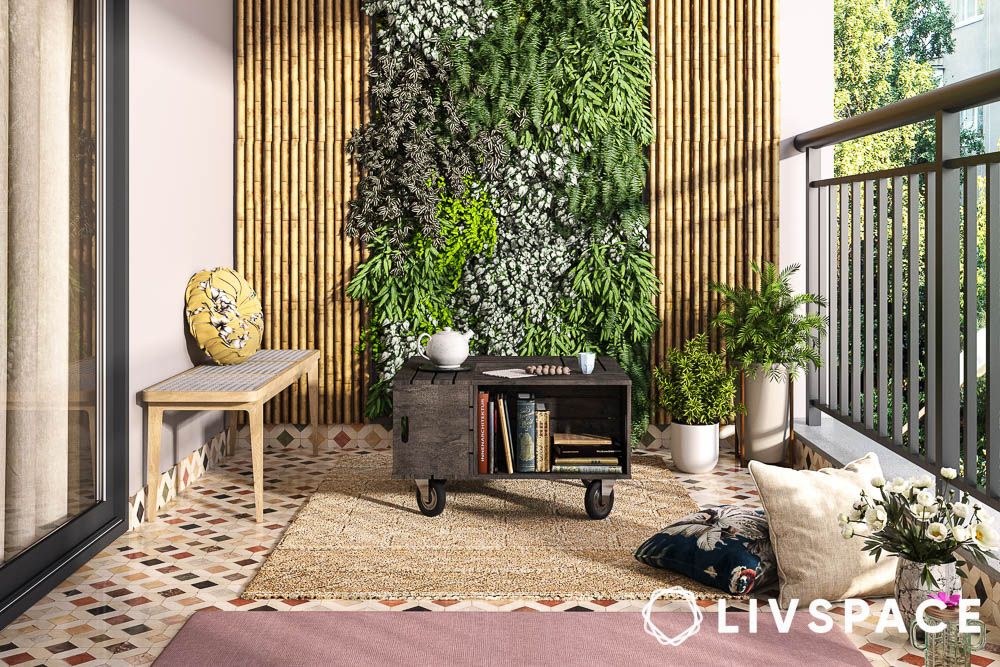
The distinction lies in scope and ambition. Eco-friendly interior design minds the immediate: bamboo over teak, water-based finishes instead of solvent-heavy ones. It’s about minimising damage. Sustainable design harbours grander aspirations. It doesn’t merely avoid harm; it regenerates. This conscious design style considers the artisans who produced your furnishings, the communities that supplied the materials, and whether these elements will eventually return to the earth without poisoning it. Eco-friendly interior design asks, “How can we do less damage?” Sustainable interior design asks, “How can our spaces heal the world?”—a question our ancestors, with their courtyards and jaalis, had already answered.
4 pillars and 5 Rs of sustainability

The pillars that uphold sustainable design form a holistic framework: environmental responsibility (protecting ecosystems and biodiversity), social equity (ensuring fair labour and accessible design), economic viability (creating lasting value without exploitation), and cultural continuity (honouring traditional knowledge and practices). Working alongside these pillars are the 5 Rs—a practical manifesto for implementation. Refuse what you don’t need, questioning every acquisition. Reduce consumption where possible, challenging the cult of more. Reuse existing materials and objects, celebrating their history. Recycle what cannot be reused, creating closed material loops. And finally, Rot—design with composting and biodegradability in mind, acknowledging that everything eventually returns to the soil. Together, these principles transform interior design from decoration to regeneration.
20+ Room-by-room sustainable interior design ideas
Whether you want to green up your whole home or one room, we’ve got ideas for every space.
Interior design and sustainability in the living room:
#1: Natural fiber furnishings

In rice-growing regions, craftspeople transform agricultural waste into design marvels. Cane, jute, water hyacinth, and sabai grass weave histories of place into your living space with tactile qualities that synthetic materials can only imitate. These sustainable interior design materials sequester CO₂ within their fibres while connecting your eco-friendly home designs to ancient craft traditions. When they wear out, they return to the soil without a trace, unlike synthetics that take permanent residence in landfills.
#2: Energy-efficient lighting
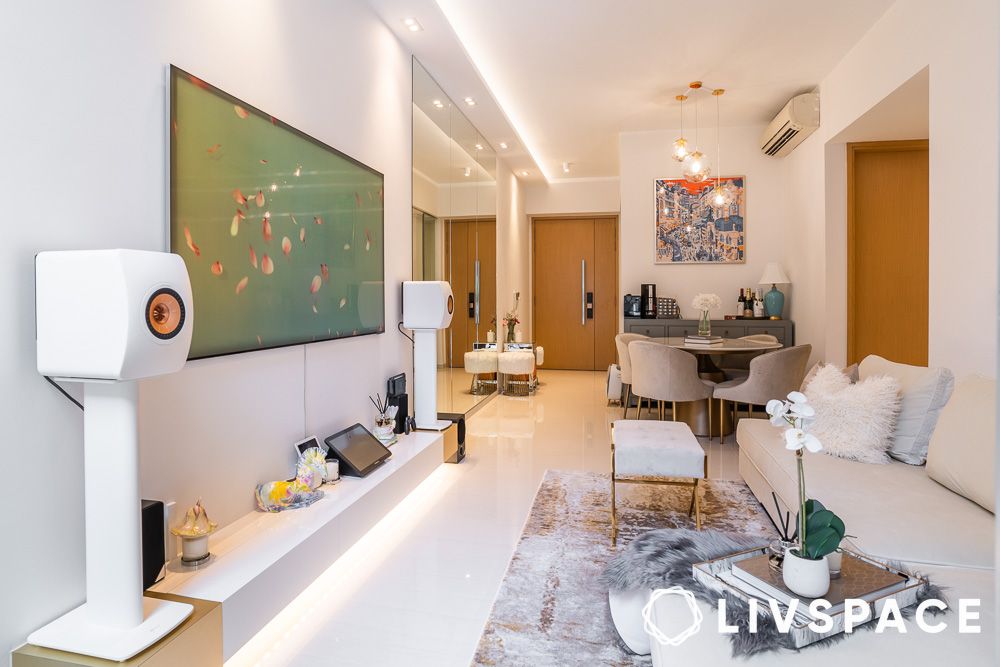
The humble lightbulb has undergone a revolution, yet most eco-friendly home designs remain stuck in transitional states of illumination. Modern LED technology uses a fraction of the energy of its predecessors whilst offering unprecedented control over colour temperature and intensity. The best lighting designs mimic natural circadian rhythms, warming as evening approaches to prepare the body for sleep. Look beyond the fitting to the bulb itself. When it comes to interior design and sustainability, the true measure lies in longevity and power consumption, not the recycled paper shade that houses it.
#3: Maximise ventilation with folding doors
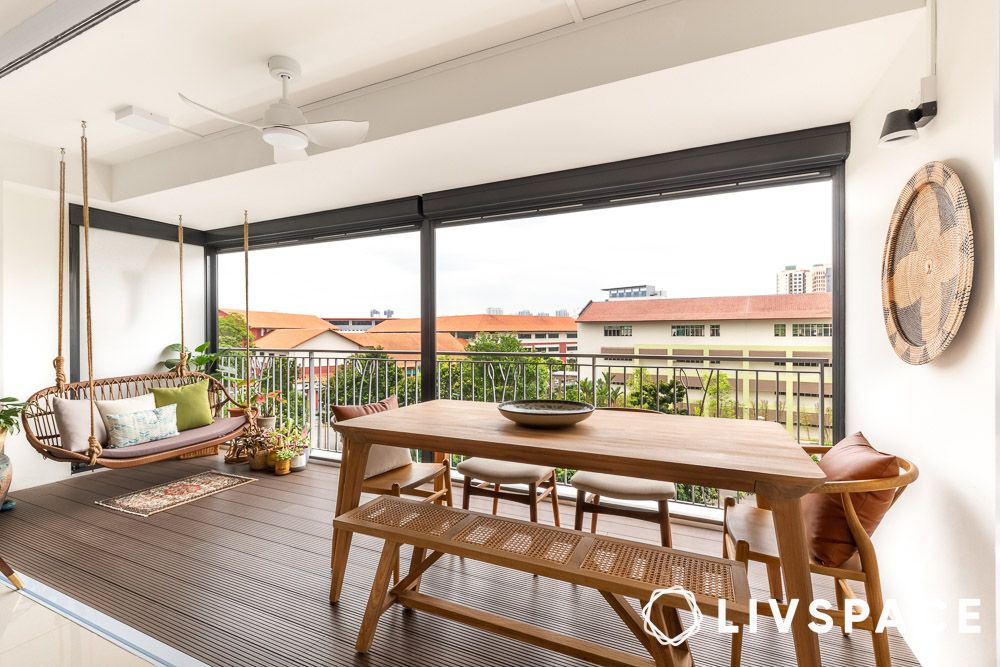
The traditional haveli with its courtyard has given way to apartments that trap heat and pollutants. Sliding door designs that peel back entire walls transform not just visual boundaries but environmental footprints. Natural airflow reduces dependency on air conditioning while creating seasonal flexibility. The most sophisticated systems feature double glazing that prevents dust infiltration while allowing monsoon breezes to circulate unimpeded during cooler months.
#4: Consider oxide flooring
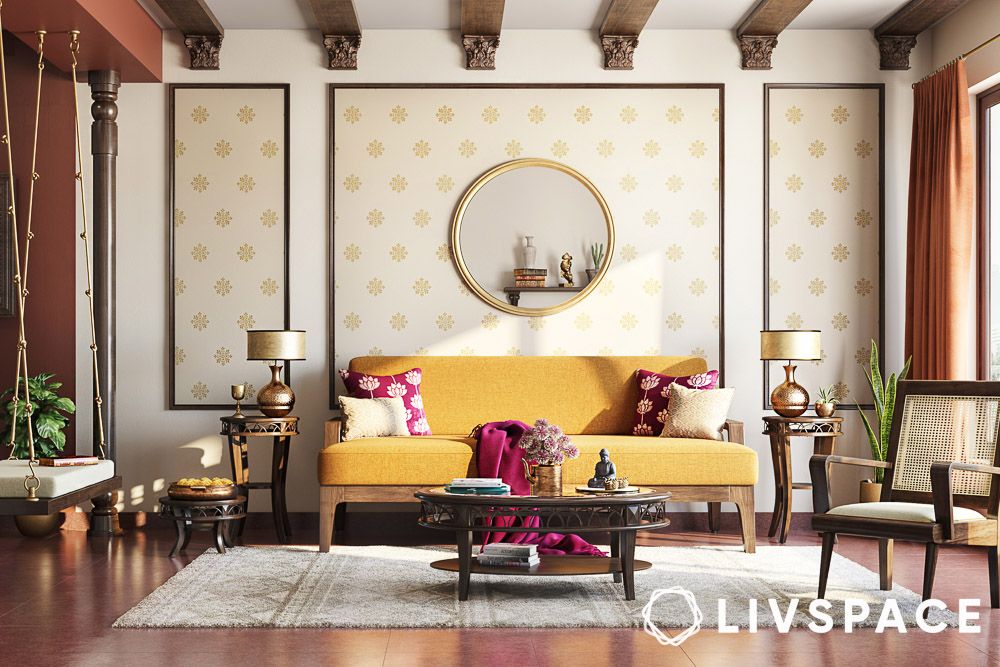
Beneath our feet lies one of interior design’s most impactful decisions. Red oxide flooring, traditional floors commonly found in Kerala homes, offers an alternative to high-carbon-footprint imported marble. These surfaces harness thermal mass to moderate temperature fluctuations naturally, which is crucial in a climate with extreme seasonal variations. They age gracefully, developing character rather than deterioration, eliminating the replacement cycles that burden our overburdened waste systems.
Sustainable and eco-friendly interior design in the kitchen
#1: Vertical herb garden
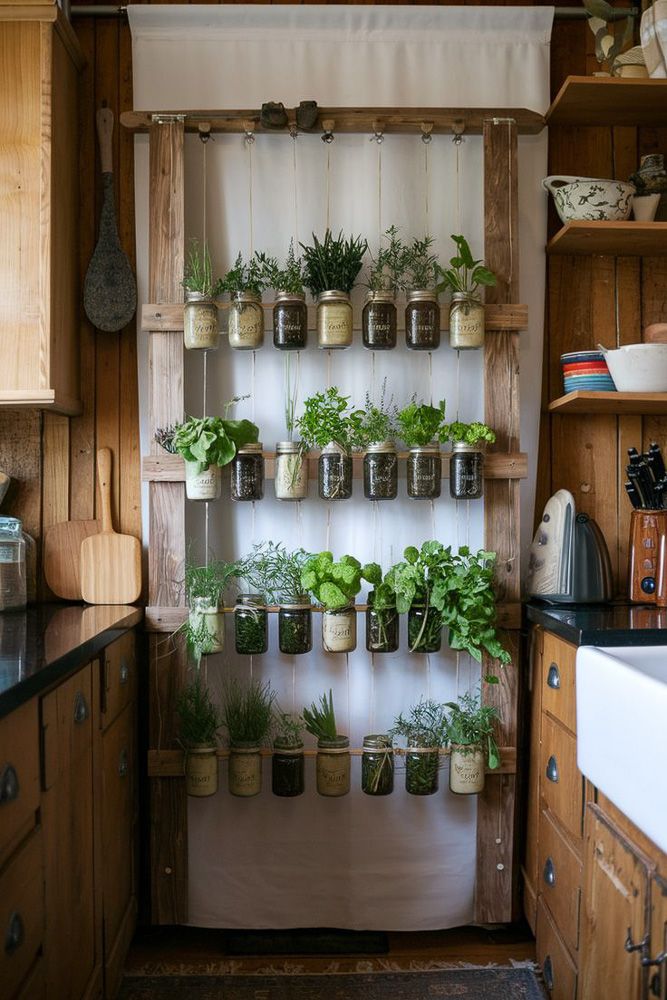
Image source: Pinterest @lawnknowledgecom
The kitchen wall transforms into a productive landscape through vertical cultivation of curry leaves, coriander and mint. Beyond the culinary benefits lies a subtle climate moderator—plants that transpire moisture into dry winter air and absorb kitchen humidity during monsoons. These living walls connect cooking to seasonality, shortening the distance from harvest to plate to mere centimetres rather than thousands of food miles from distant farms to urban markets.
Also Read: Make Your Own Kitchen Garden: A Beginner’s Guide
#2: Choose sustainable interior design materials

The kitchen countertop, subject to more activity than perhaps any surface in the home, presents particular sustainability challenges. Terrazzo flooring—created from marble waste bound with cement—offers remarkable longevity without the extraction impacts of new stone quarrying. Local craftspeople still practice this art, creating bespoke surfaces that celebrate regional materials. Look beyond showroom marketing to manufacturing transparency—where materials originate tells the true sustainability story.
#3: Wicker baskets
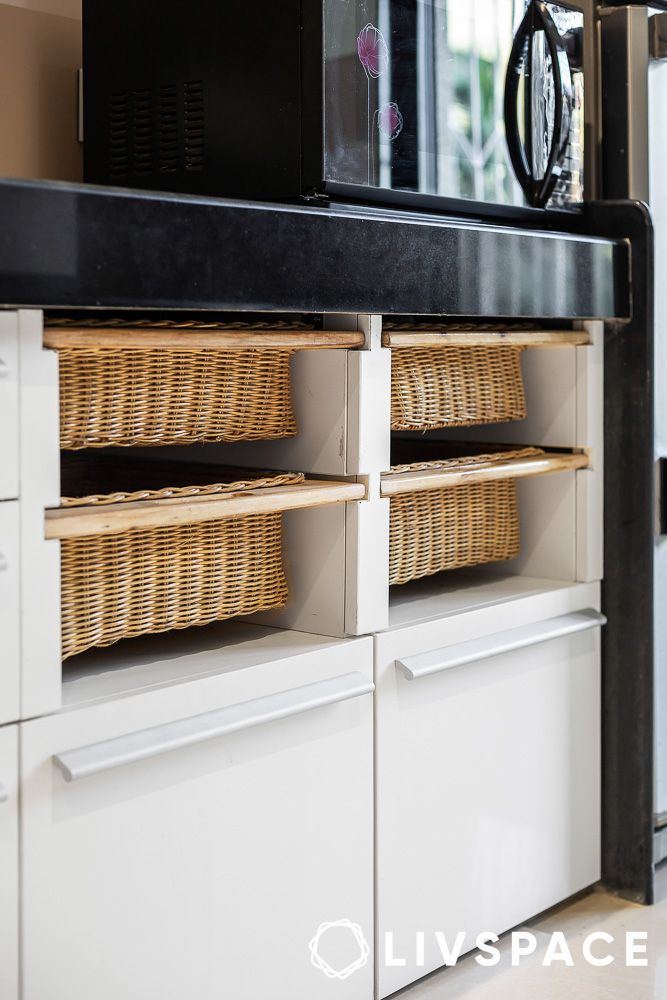
The humble basket represents one of humanity’s oldest storage technologies, yet its sustainability credentials outperform most modern alternatives. Hand-woven baskets from managed bamboo create carbon sinks while supporting traditional craft economies from Northeast India to Karnataka. Unlike plastic containers, these vessels develop a patina through use, often lasting generations. Their natural breathability prevents food spoilage through moisture regulation—particularly valuable in humid climates without consistent refrigeration.
Eco-friendly home designs for the bathroom
#1: Water-conserving fixtures
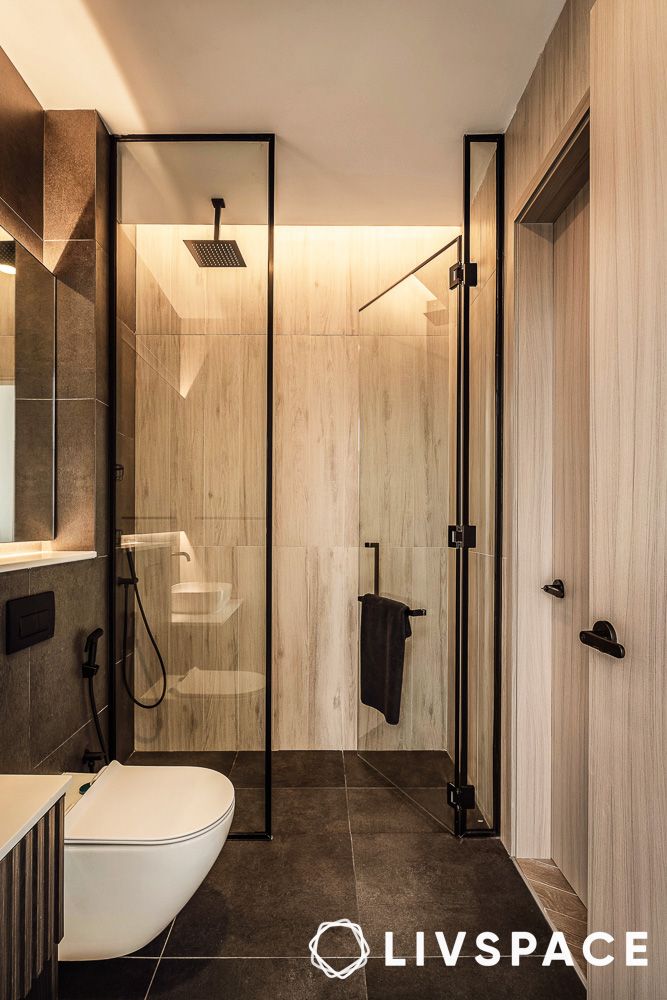
In a country where water scarcity affects millions, the bathroom represents our most water-intensive domestic space, yet conventional fixtures remain stubbornly inefficient. Contemporary low-flow technologies challenge the false dichotomy between conservation and experience—thermostatic mixers deliver consistent temperatures while using less water, and aerated showerheads provide a luxurious sensation with reduced flow. The most impressive systems incorporate greywater recycling, using shower water for toilet flushing.
Also Read: 6 Shower Heads Styles To Suit Your Needs
#2: Humid-friendly plants
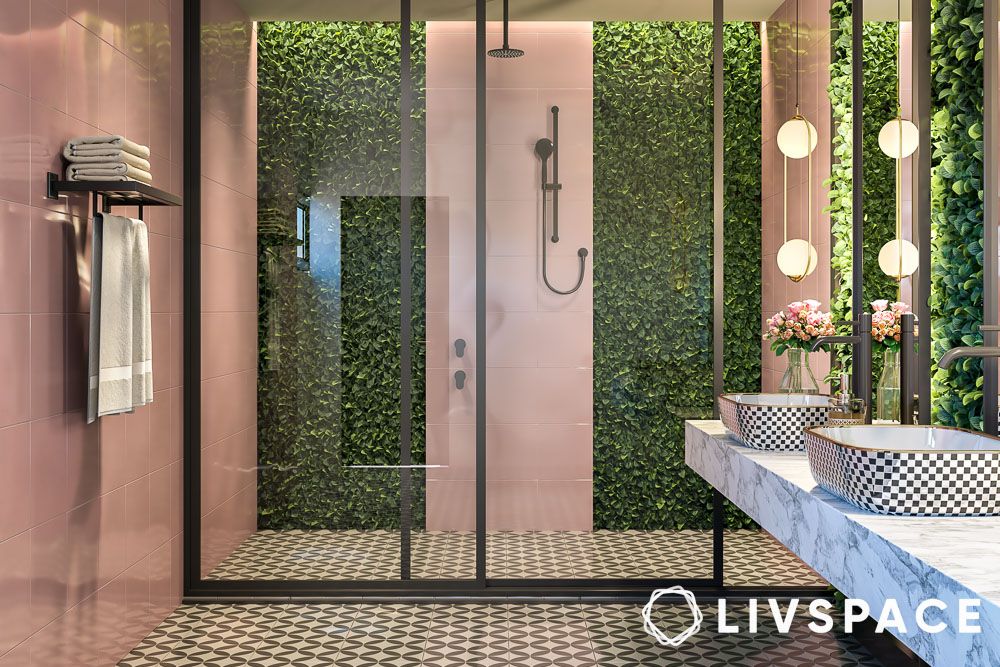
The bathroom’s microclimate—warm, humid, and often lacking natural light—presents unique opportunities for biophilic design. Ferns, peace lilies, and certain indoor plants native to India’s forests act as living air purifiers, transforming carbon dioxide into oxygen while filtering airborne toxins. The most sophisticated applications incorporate plants into shower drainage, creating miniature wetlands that begin water filtration before wastewater enters municipal systems—when such systems exist at all.
Also Read: 7 Spots to Keep Air-Purifying Plants at Home
#3: Solar water heating integrations

The energy required to heat water represents one of the home’s largest electricity expenditures. Eco-friendly home designs with roof-mounted solar thermal systems—already common in various cities of India—can provide nearly all domestic hot water needs in India’s sun-rich climate. Unlike photovoltaic systems that convert sunlight to electricity and back to heat, thermal collectors capture heat directly. The most advanced designs integrate storage solutions that retain solar-generated warmth for evening use.
Interior design and sustainability in the bedroom
#1: Organic bedding
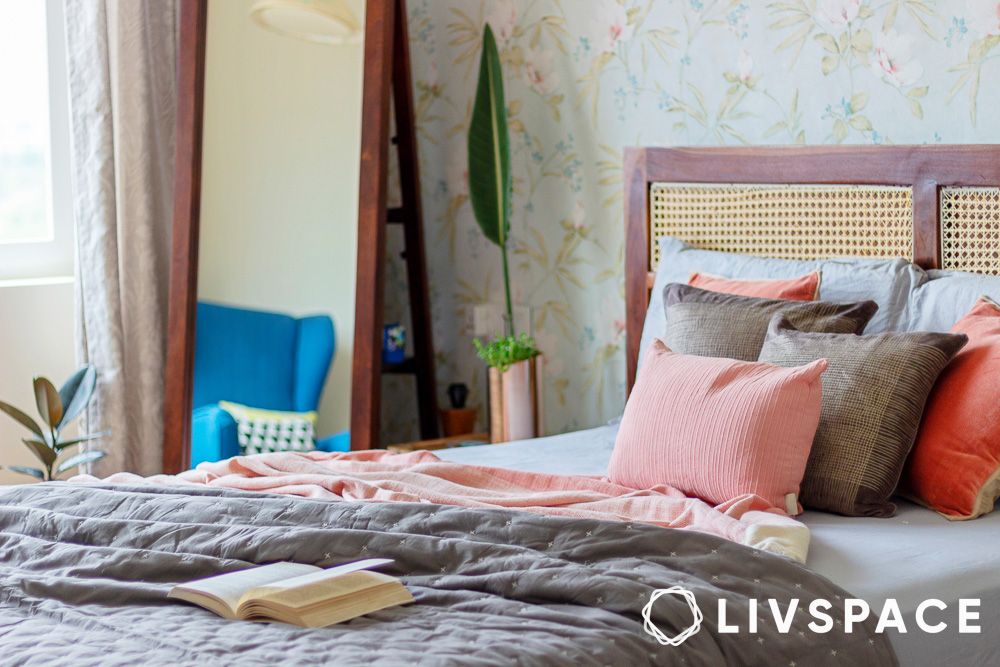
We spend a third of our lives in intimate contact with bedding materials, yet conventional options come laden with persistent chemicals. Truly organic textiles eliminate pesticide residues, formaldehyde finishes, and flame retardants. Natural fibres like organic cotton from Gujarat and Telangana regulate temperature far more effectively than synthetic alternatives—crucial in a climate with dramatic diurnal temperature variations. The most progressive manufacturers support India’s organic cotton farmers while using natural dyes from traditional sources.
#2: Reclaimed furniture for storage
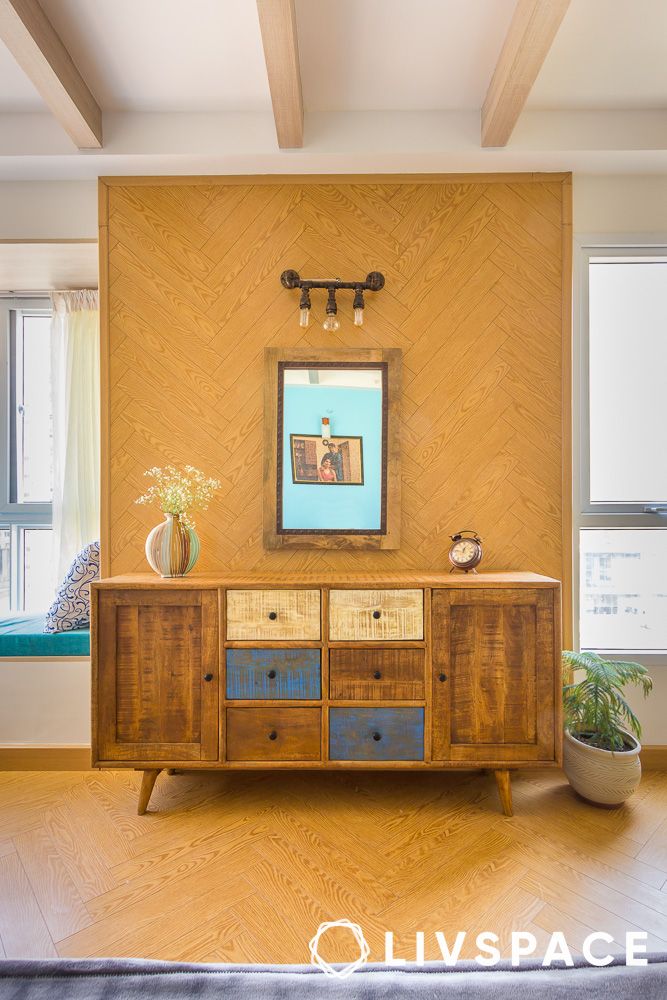
The bedroom almari, typically constructed from virgin timber, represents substantial embodied carbon. Reclaimed or refurbished furniture—whether vintage pieces restored to function or new items constructed from salvaged railway sleepers—keeps these resources in circulation. The patina of previous use adds character that is impossible to replicate in mass production, while the density of old-growth timber surpasses most contemporary sources. Look beyond superficial “distressing” to authentic reclamation—where materials originate reveals genuine sustainability.
#3: Balcony/tall windows for natural light
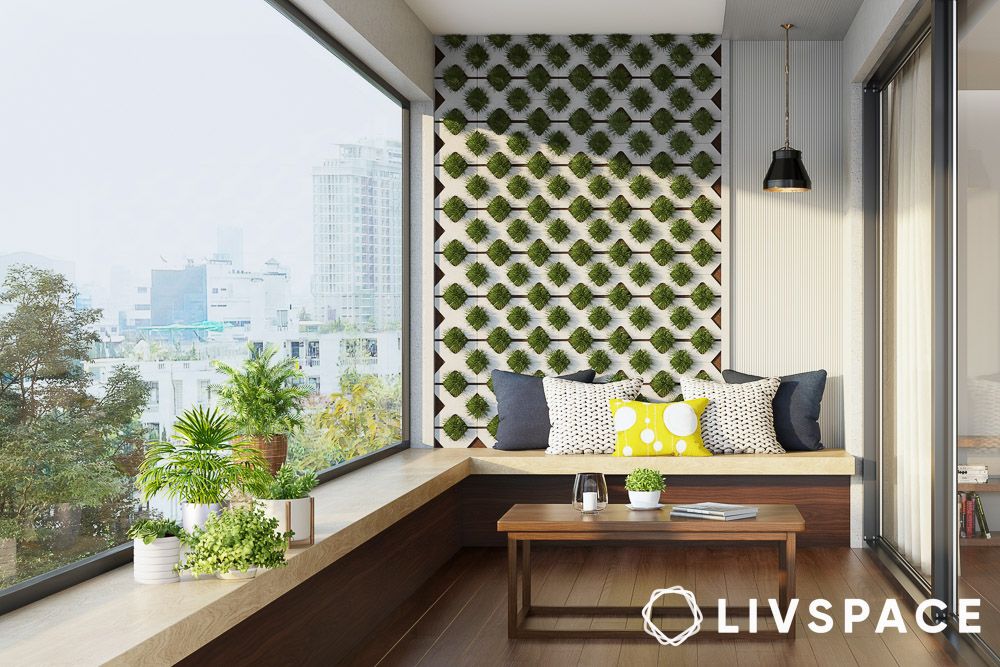
The quality of bedroom light profoundly affects both sleep hygiene and energy consumption. Tall windows oriented to capture morning sunlight help maintain healthy circadian rhythms by providing the blue spectrum illumination that naturally suppresses melatonin. This passive design strategy reduces electricity demand while improving sleep quality. The most sophisticated applications feature external jaalis or chajjas that control harsh summer sunlight while allowing winter warmth to penetrate.
Also Read: 16 Different Types of Windows You Can Choose From to Suit Your Style
Going green with outdoor/balcony spaces
#1: Rainwater harvesting
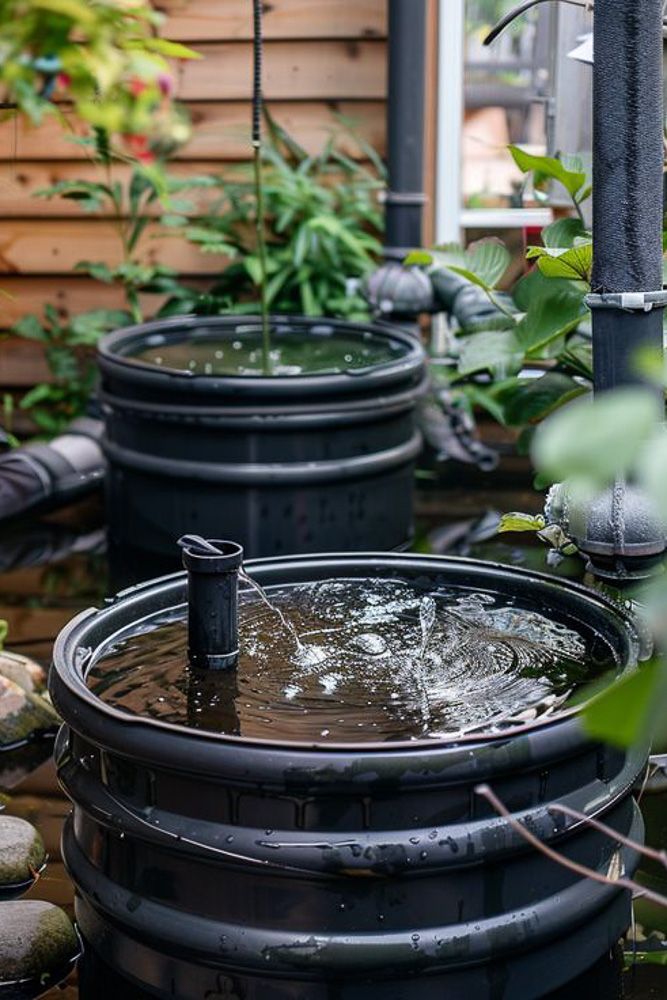
Image source: Pinterest @MinimalistHomeVibes
The modest balcony transforms from mere leisure space to water infrastructure through simple harvesting systems. Rainwater provides ideal irrigation for container plants, crucial during the long dry season between monsoons. Even small collection systems buffer extreme rainfall events, reducing pressure on ageing municipal drainage increasingly overwhelmed by climate volatility. The most imaginative designs integrate storage aesthetically—water walls that double as thermal mass or planters with integrated reservoirs.
#2: Solar-powered lighting designs
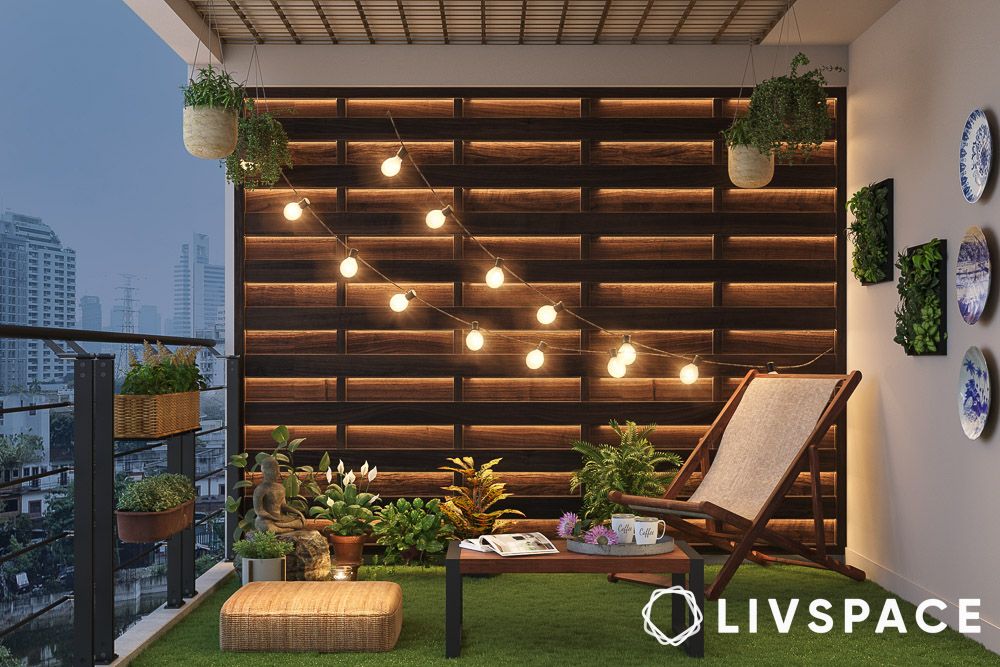
Our outdoor balcony design, after dusk, becomes a magical extension of living space through thoughtfully deployed illumination. Solar-powered lighting eliminates both the need for wiring and ongoing electricity consumption in a country where power cuts remain common. The most successful applications avoid uniform brightness in favour of layered pools of light that preserve urban biodiversity. Look beyond imported plastic designs to terracotta diyas with integrated solar elements—lighting that honours tradition while embracing innovation.
#3: A complete no-brainer – Plants
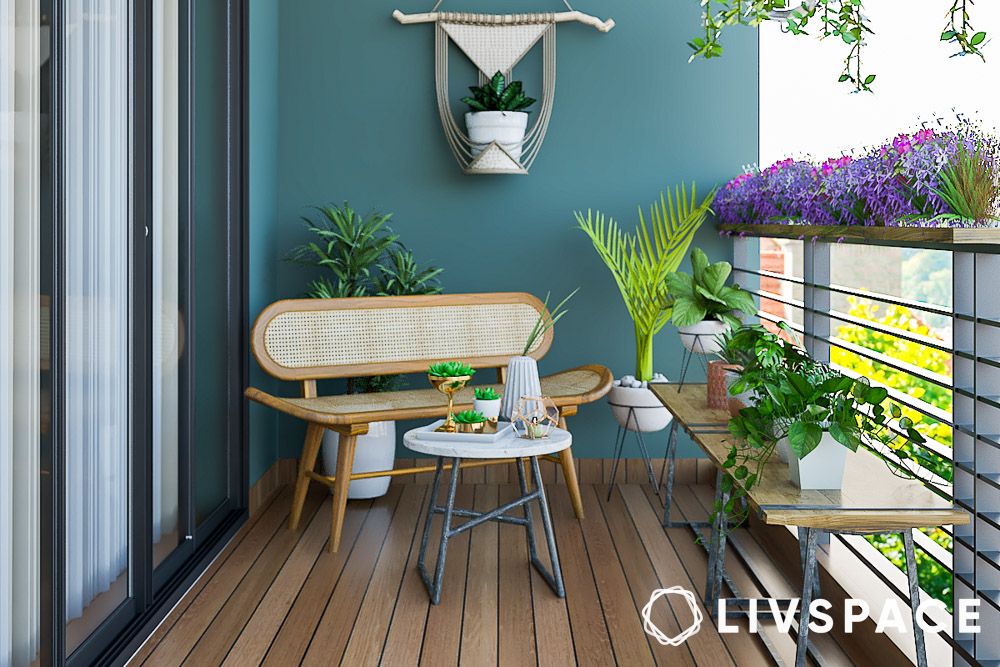
The plants we choose for outdoor spaces transcend mere decoration to become functioning ecosystem partners. Native species support local pollinators while requiring less water and chemical intervention than exotic alternatives. Tulsi, marigold, jasmine and indigenous succulents develop resilience to pests while improving air quality in polluted urban environments. The most progressive approach to decorating with plants incorporates kitchen gardens, transforming balconies into productive spaces that reconnect urban dwellers with food systems dominated by chemical agriculture.
Other sustainable interior design ideas:
#1: Add glass tile to your ceiling
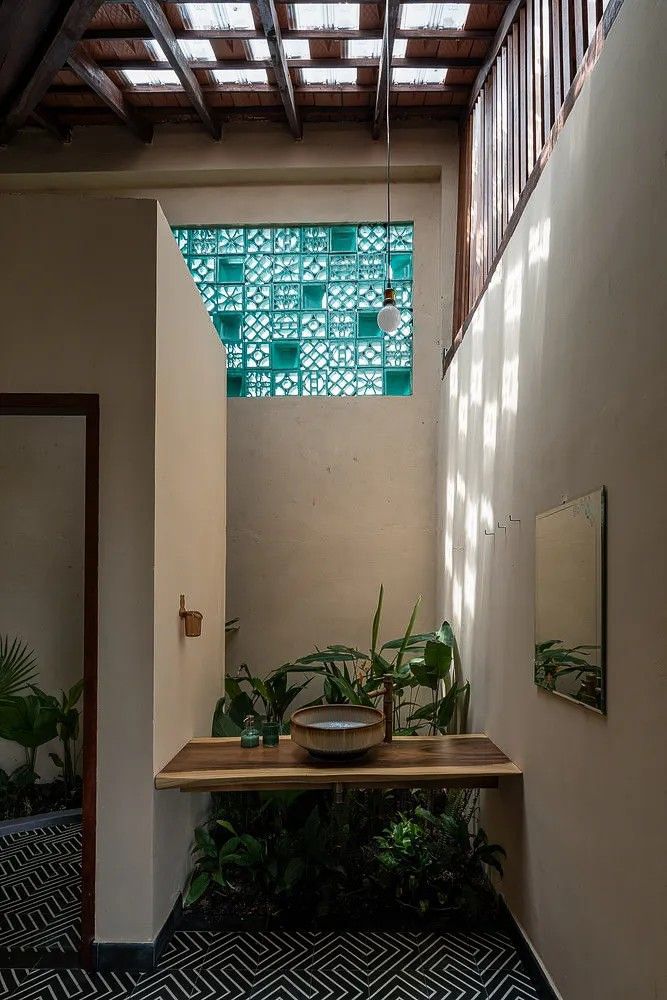
Image source: Pinterest @fatimagillani
The thoughtful insertion of recycled glass tiles among traditional terracotta or tiled roof designs creates an unexpected dialogue between materials. These glass elements—often manufactured from discarded bottles—capture and refract light differently throughout the day. Beyond aesthetics, this combination improves thermal performance in a climate where floor temperature significantly impacts comfort. Artisans in Gujarat and Rajasthan have already begun reinterpreting these traditional materials for contemporary contexts.
#2: Cross-ventilation designs

The strategic alignment of openings to capture prevailing breezes represents perhaps the oldest climate control technology on the subcontinent. Cross ventilation—facilitating air movement through pressure differentials—can reduce or eliminate mechanical cooling requirements during transitional seasons. The most sophisticated applications incorporate automated systems that respond to temperature conditions, opening high-level windows to release warm air through stack effect principles—exactly as traditional jharokhas once did.
#3: Carve out a nice, open area for yourself
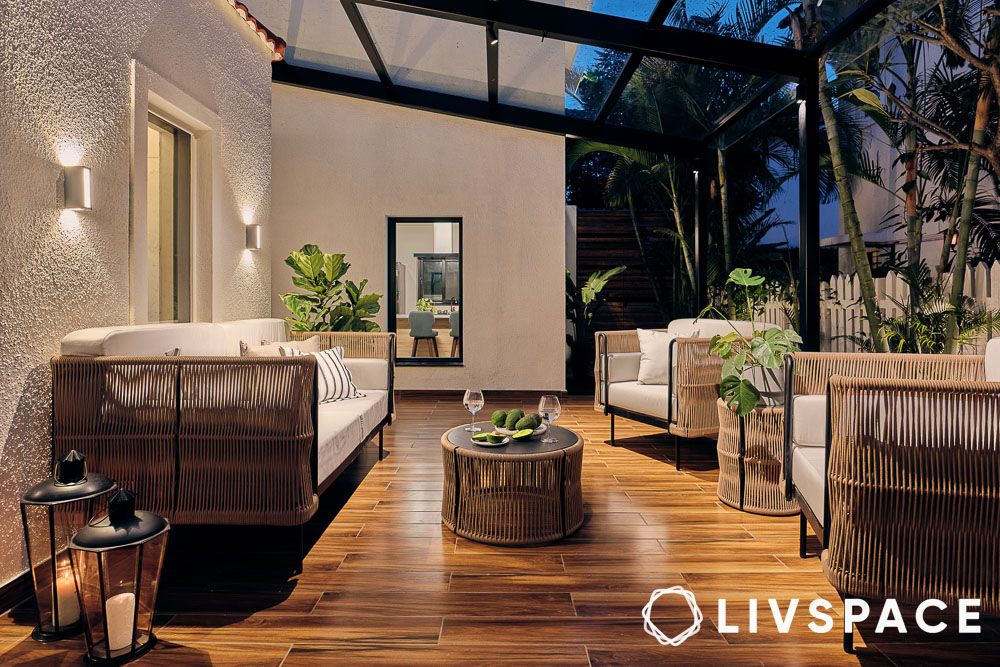
The pursuit of usable square footage in India’s expensive urban real estate often results in overcrowded interiors—spaces filled to capacity rather than designed for psychological well-being. Deliberate emptiness—negative space that allows movement and contemplation—represents a sustainable choice by challenging endless consumption. These open areas improve air circulation and create psychological breathing space essential for mental health in densely populated urban environments
Also Read: 28 Best Garden Landscaping Ideas for a Stunning Outdoor Space
#4: High ceilings
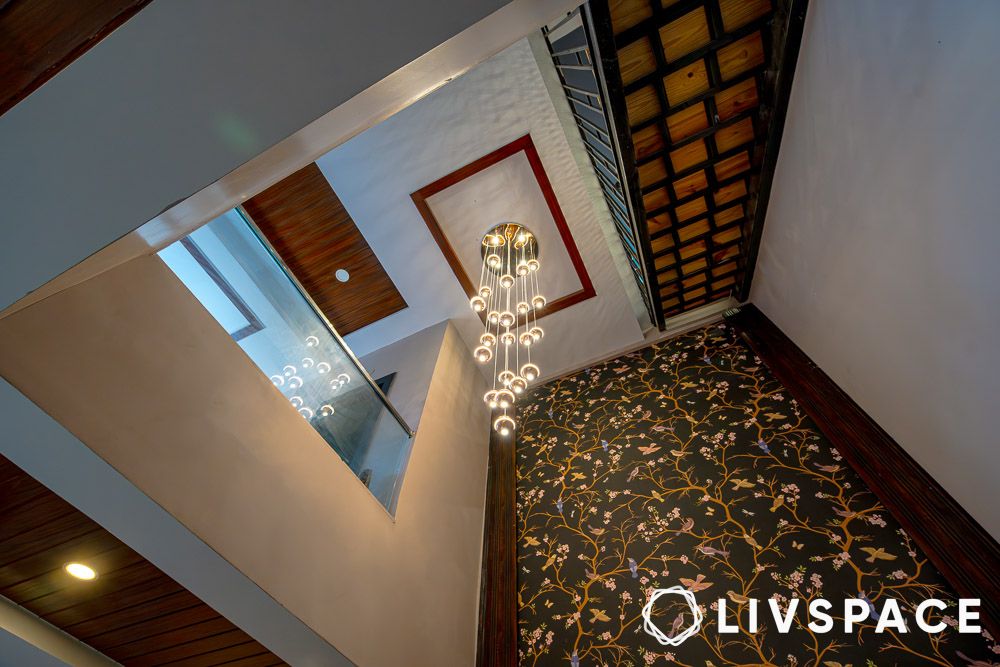
The vertical dimension dramatically affects both perceived spaciousness and actual environmental performance—something understood perfectly by the builders of traditional Indian architecture. Higher ceilings allow hot air to stratify naturally away from the occupied zone, improving comfort without mechanical intervention.
#5: Opt for double-glazed windows
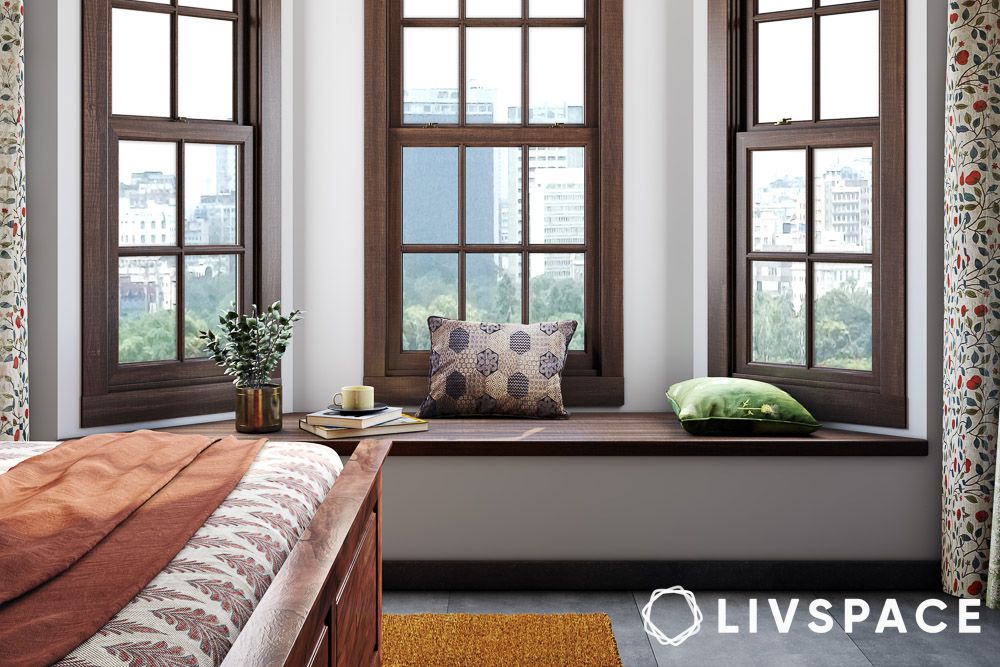
The window represents the most vulnerable thermal boundary, yet remains stubbornly underspecified in many Indian constructions. Double glazing dramatically reduces heat transfer while improving acoustic insulation—increasingly important in noisy urban environments. The most advanced systems incorporate low-emissivity coatings that reflect infrared energy back to their source, keeping cool air inside during summer and hot air outside during winter—particularly valuable as our cities grow hotter.
#6: Go local
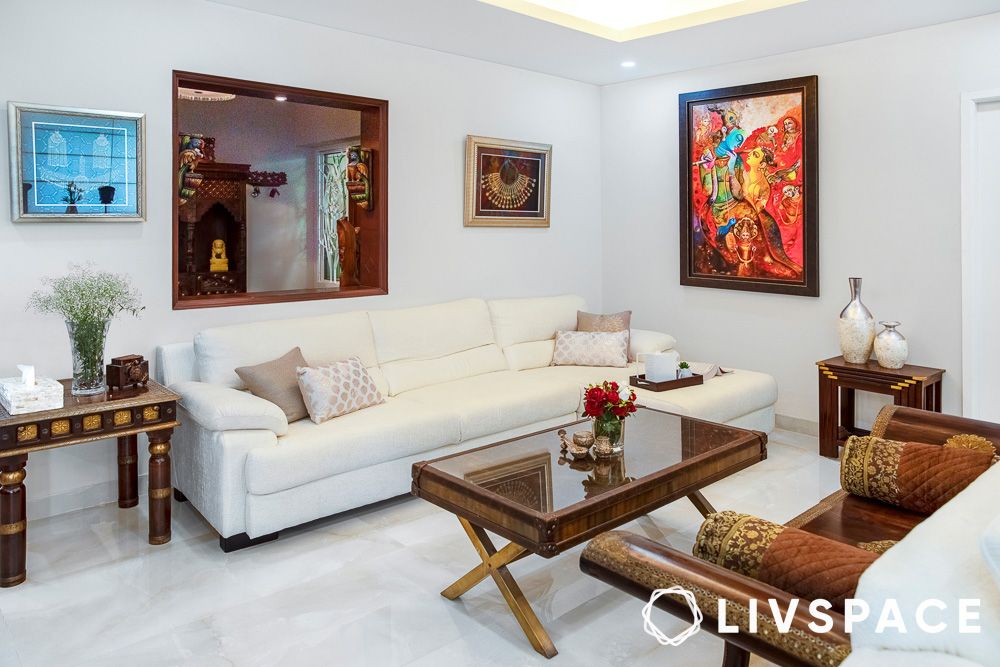
Locally sourced materials—from Jaisalmer stone to Athangudi tiles—drastically reduce transportation emissions while supporting regional economic resilience. These elements carry the specific character of the place, connecting interiors to their geographic context. The most meaningful applications celebrate rather than conceal regional distinctiveness, creating spaces with an authentic connection to location—interiors that could exist nowhere but in India.
Also Read: 8 Livspace Homes That Celebrate Traditional Interior Designs of India
#7: Opt for low-VOC paints

The conventional paint tin harbours invisible hazards—volatile organic compounds that continue off-gassing into indoor air long after application odours dissipate. Low-VOC alternatives eliminate these persistent pollutants without compromising durability. The most advanced formulations incorporate natural ingredients like milk protein, clay and plant-derived binders that actively improve indoor air quality—particularly important in cities with some of the world’s worst outdoor air pollution.
How can Livspace help you?
If you’re looking for ways to incorporate sustainable interior design into your home, book an online consultation with Livspace today. Our team of seasoned and creative designers is ready to collaborate with you to bring your vision to life.
- Our expert team can custom-design your dream home with curated render designs and expert advice
- We have delivered over 75,000 happy homes
- Count on us for high-quality and durable materials
Visit the nearest Livspace experience centre today to know more!
Disclaimer: All contents of the story are specific to the time of publication. Mentions of costs, budget, materials, finishes, and products from the Livspace catalogue can vary with reference to current rates. Talk to our designer for more details on pricing and availability.













